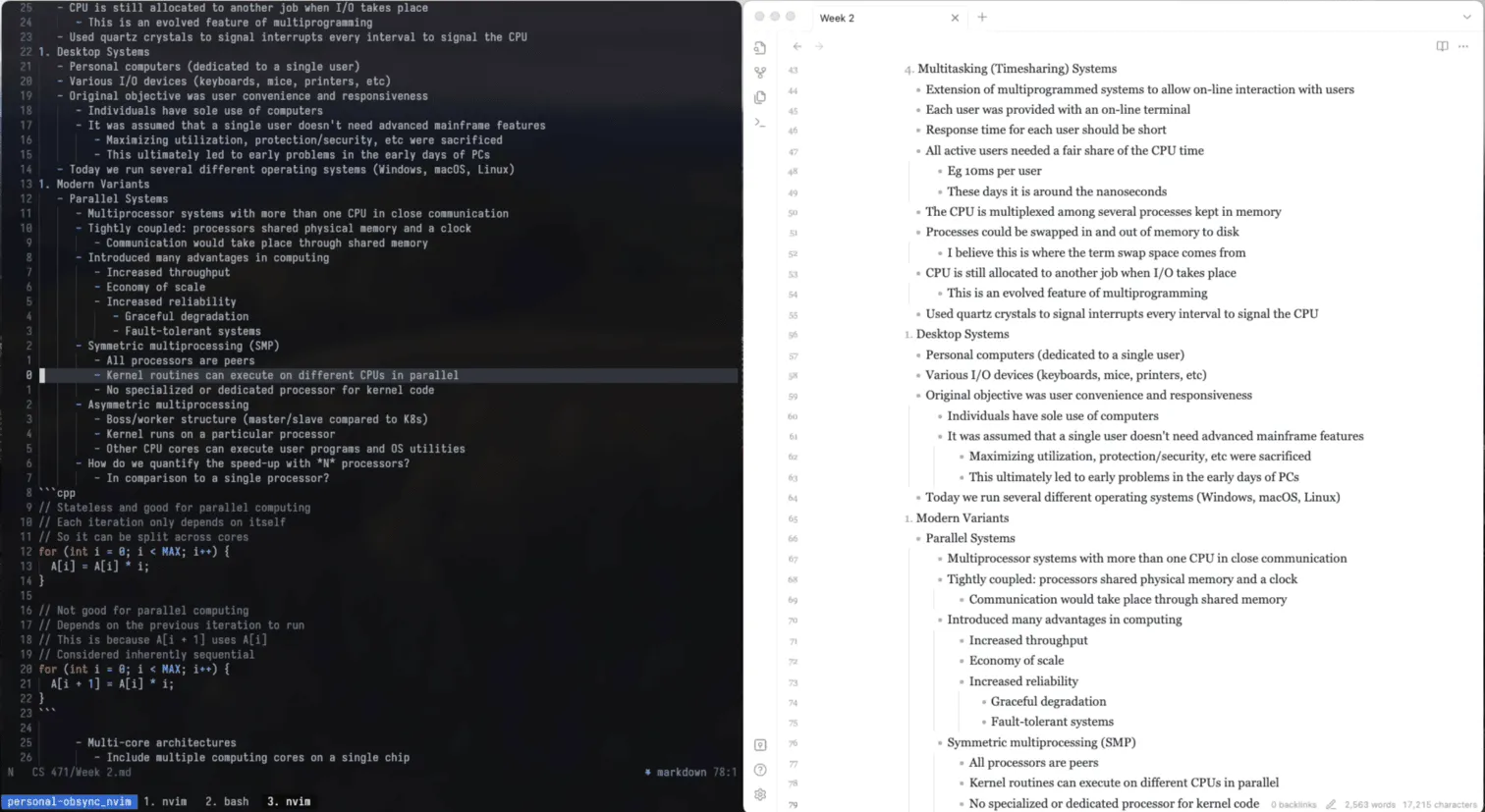ᨒ Aarnav Tale
[<- Back]February 9, 2024
There is no Perfect Note-Taking App

As a student, I find it important to take notes during lectures. I’ve spent my fair share of time looking for a proper note-taking app and I ultimately settled on Craft. It checked off a few crucial boxes for me:
- It’s local-first, I’m able to work offline and sync later.
- It’s markdown-based, which means I can easily export my notes.
- It’s advanced, I’m able to use LaTeX with a proper engine.
Craft is paid (however I’m on a student plan) and it’s not open-source. To make matters worse, the documents are stored in a binary block format, which means I can’t easily access them outside of the app. That being said, I’ve been using it for over a year now and I’m quite happy with it because it’s suited my needs.
However recently, one of my friends recommended I give Obsidian a try and I was genuinely curious to see how I could start a potential transition and ultimately switch to the app. For the uninitiated, Obsidian is a note-taking app with lots of powerful visualization and backlinking features. It’s free, uses local markdown files, and extensible with JavaScript plugins.
Once I’d gotten my notes imported, I realized that I was missing a few features that I’d grown accustomed to in Craft. Slash commands and a “focus mode” were the two main features that I missed, however those were easily solved with a few plugins. The calendar view and integration was also something I missed, but I could live without it for the time being. I didn’t really benefit from the backlinking features because it doesn’t really work with the way I take notes. Generally, I’ll make a new document each week and take notes chronologically, eliminating the need for backlinking.
I was also trying to find a way to write notes with my preferred text editor at the time, Neovim, so I had a crazy idea. What if I built an Obsidian and Neovim plugin that allowed me to edit my notes with Neovim and use Obsidian as a previewer? I found out that Obsidian has a plugin API and they’re just simple Node.js applications, so I started working on it. Within 2 days, I had a working prototype that synchronized scrolling, editing, and allowed pasting images into the Neovim buffer. Honestly, it was a great learning project because I learned how to write Neovim plugins which are traditionally written in lua.
Here’s the kicker, I never ended up using the plugin.
Yep, I basically just wasted 2 days on a project that I never ended up using. When I got to my next lecture, I realized that the plugin and Obsidian as a whole just didn’t fit my workflow. First, while I heavily appreciate the vim motions and editing, there were a few problems that I couldn’t solve.
-
I never used the vim motions because I wrote my notes chronologically, I didn’t need the power of editing that comes with vim motions.
-
Having 2 windows open on a 14” laptop made it so that I couldn’t keep a browser open which I typically used to assist my learning.
Finally, without major configuration, Obsidian just looked “off” to me in a way I couldn’t explain. I believe it has to do with the appearance of the editor, but it felt like a knock-off to Notion at best. So what’s the moral of the story? There isn’t a perfect note-taking app, just the one you make work for yourself. Craft isn’t perfect by any means, but I’ve developed a workflow and note-taking strategy around it, which is why it’s hard for me to switch off of it. If you’re looking for advice on picking a note-taking app, honestly it’s just best to try what works for you and what you have an established workflow with.